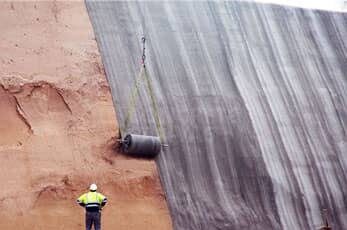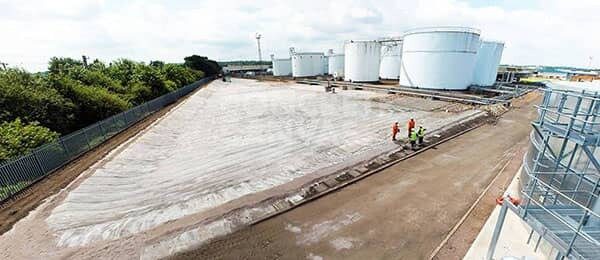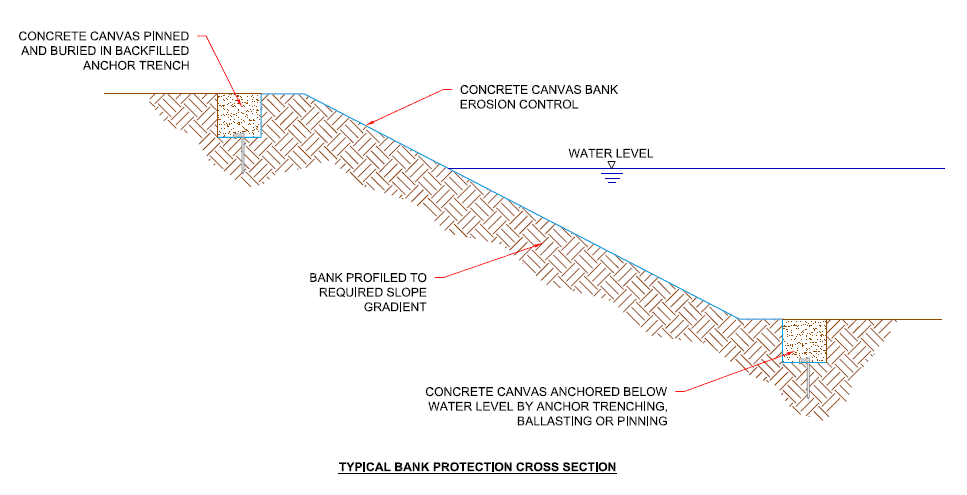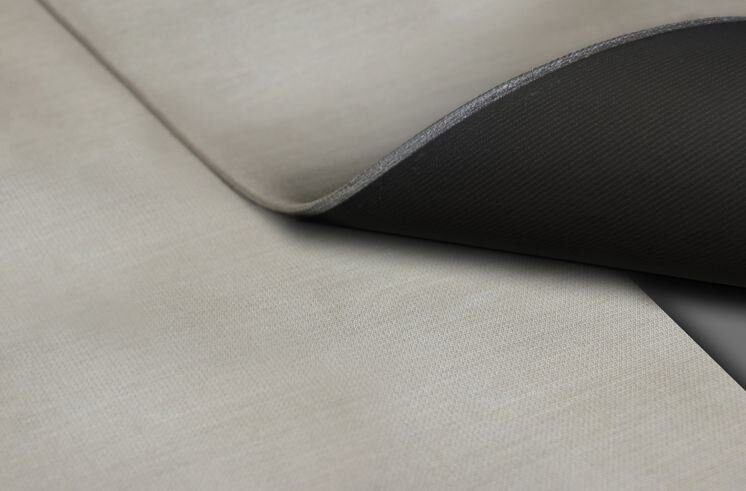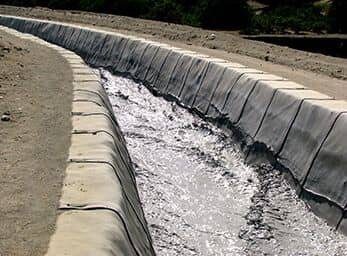Concrete Canvas Ltd has recently published a case study compilation for a new application: bank erosion protection.
With similarities to slope protection and lagoon lining, here we’ll look at the differences between these applications, how to know which application your project falls under, and why Concrete Canvas® (CC) GCCM is beneficial for bank erosion protection projects.
What is Slope Protection?
Slope protection is required where the body of the slope is inherently stable but the surface is prone to erosion from wind, rain or water runoff. This is often seen on sandstone rock faces or where the slope is made up of small rocks or a fine substrate such as soil. A solution is therefore required for slope protection to prevent the surface material from eroding.
What is Lagoon Lining?
Here, a lagoon would be defined as a shallow vessel which holds a body of water or other liquid. The lagoon will typically be man-made, with a purpose of separating and containing its contents; lagoon lining would be required to prevent liquid loss or contamination of the local ecology. Lagoons of this type are often found on mining, agricultural and petrochemical sites, for example.
How does Bank Erosion Protection differ?
While bank erosion protection (BEP) projects share some characteristics with slope protection and lagoon lining projects, and could even be cross-classed between the three, the key aims of a BEP project differs.
BEP projects involve the lining of the banks only for the specific purpose of erosion protection, as opposed to lagoon lining which refers to the lining of the banks and floor of the asset for containment purposes.
The key difference between BEP and slope protection projects is the location of the area requiring protection. Slopes are generally land-based (often road- or rail-side, for example), whereas banks are situated around a body of water such as rivers, lagoons, or ponds.
What are the key benefits of using CC for Bank Erosion Protection?
Rapid install – CC can be installed at rates of up to 200m² per hour and is up to ten-times faster to install than poured concrete.
Easy to use – CC can be installed using basic hand tools and equipment, and does not require specialist training or personnel. CC cannot be over-hydrated and will set underwater.
Lower project costs – the speed and ease of CC installations makes it a more cost-effective solution than conventional concreting methods.
Easy transportation – CC can be provided in custom-length batched rolls for easier transportation to and on site. CC batched rolls can be lifted by two people, often eliminating the requirement for plant on site.
How does CC perform compared to alternatives?
Abrasion resistant – CC prevents surface erosion caused by weathering and is five-times as abrasion resistant as standard OPC concrete.
Weed suppressant – CC acts as an effective weed inhibitor, preventing the costly, regular maintenance required for unlined or vegetated banks.
Environmentally sensitive – Compared to conventional concrete, CC is a low mass, lower carbon technology which uses up to 95% less concrete for many applications. CC has a low alkaline reserve and washout rate and can therefore be installed in natural watercourses without adversely affecting water quality. CC has been specified by environmental agencies worldwide.
Ageing – Moss can grow on the fibrous top surface of CC resulting in it ‘greening over’ and blending in with its surroundings.
Still not sure?
To summarise, a project falls under bank erosion protection where there is a requirement for erosion protection of a bank surrounding a body of water (rivers, ponds, or lagoons), the protection is required on the slope both above and below water level, but not for the floor of the asset. The primary aim for the application will be erosion protection rather than containment.
CC provides a number of advantages over traditional concretes, including greater abrasion resistance and weed suppression while providing a more natural appearance. CC is also a more environmentally sensitive solution to concrete and can typically be installed directly into a body of water.
See some examples of bank erosion protection projects in the Concrete Canvas® Bank Erosion Protection Compilation. For further information about our products see the Concrete Canvas®, CC Hydro™ and CC Shelters™ pages.

